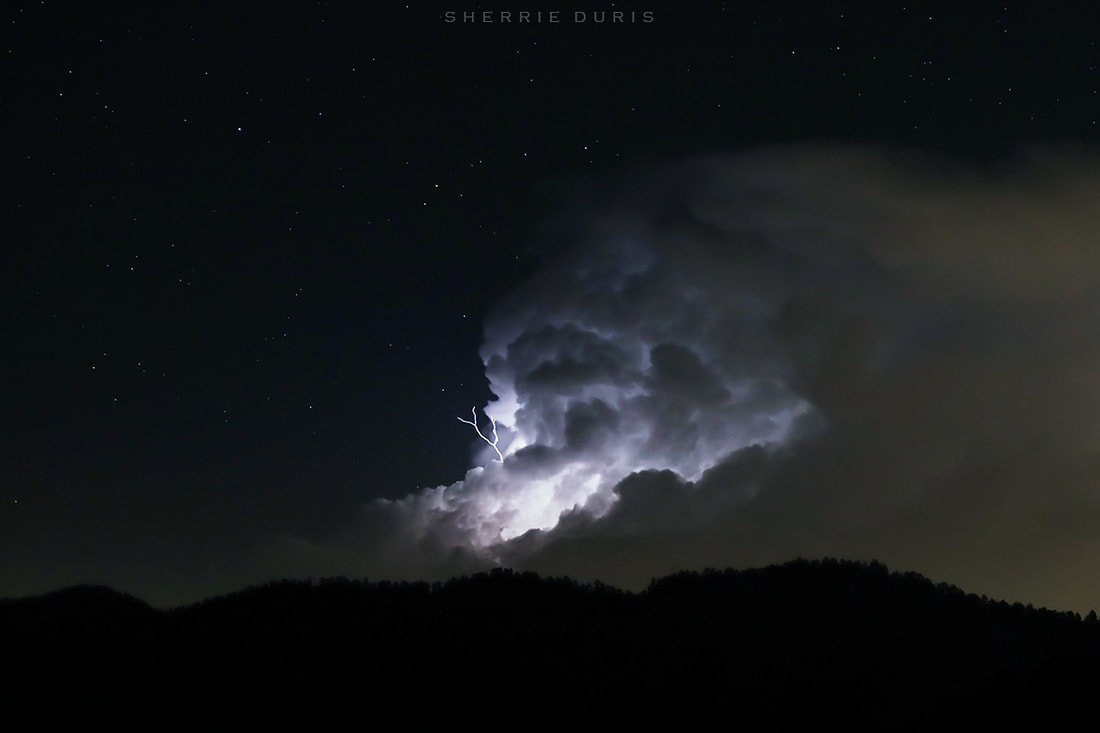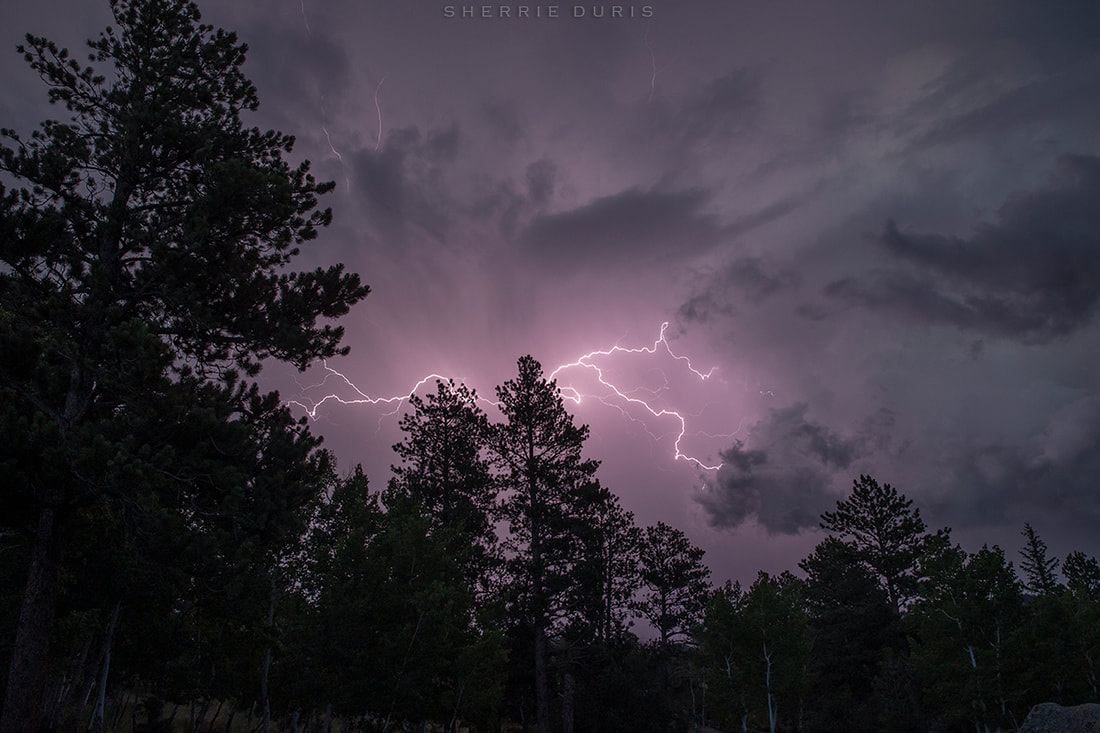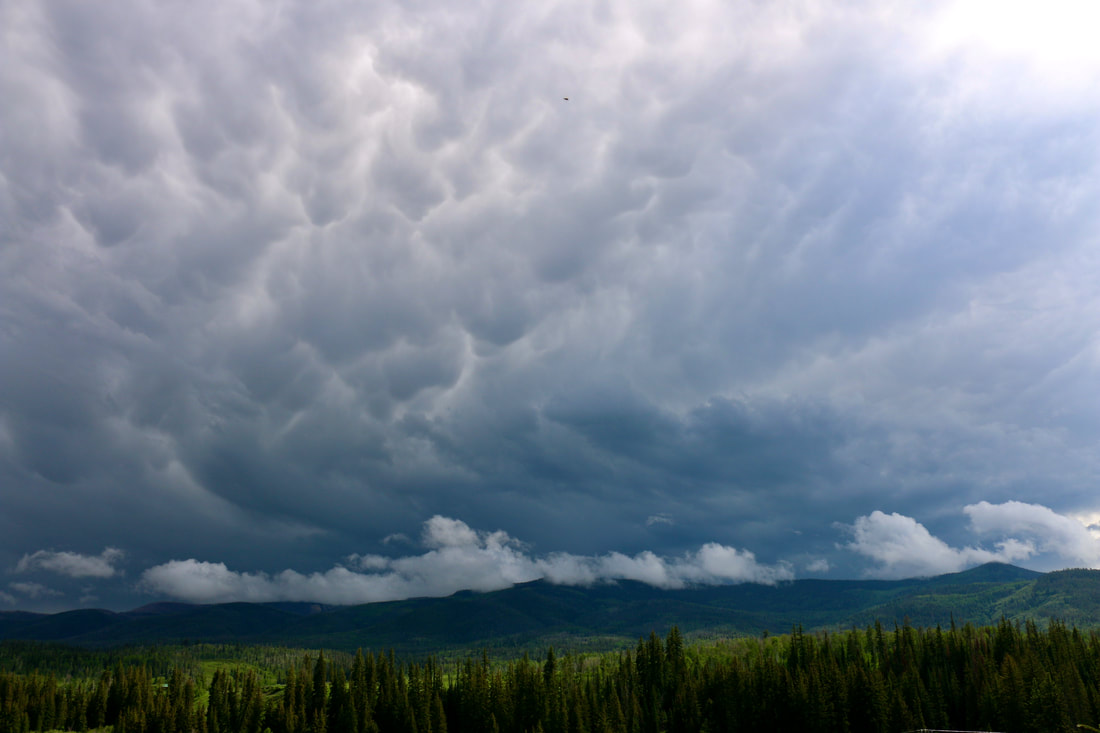|
Notes from the
Trail |
|
By Murray Selleck There’s not much you can do when you’re inside a thunderstorm cloud with lightning flashing and thunder pounding simultaneously. The crack and flash of lightning hurt our eyes so harshly that even with them closed the light penetrated through eyelids squeezed closed tight. Being inside the belly of a timpani drum while the drummer pounds out a rhythm might give you an idea of the ear punishing thunder but it wouldn’t describe the anxiety of being caught out and exposed in such a mountain storm. That was our luck camped way above timberline on a snowfield up in the North Cascades. We were a group of climbers on a month’s long mountaineering course with the National Outdoor Leadership School and we were just about as exposed as a person could be. The day had been overcast, not unusual for the North Cascades. Across a deep valley from us was Mount Johannesburg with a strange lenticular cloud silently smothering its summit. The sun was setting and an eerie orange, green and yellowish glow was coloring the clouds. It was such an unusual color it created a feeling of unease in all of us. And what felt like a heartbeat, the cloud shifted and moved onto us and let loose its maelstrom. We did what we could taking all our ice axes and planting them in a cluster above camp to create a lightning rod. Or so we hoped. We grabbed a couple tents and raced down the snowy slope loosing as much elevation as possible before rain, thunder, and lightning told us far enough. We crammed as many of us that would fit into a few two person tents and waited it out, each of us silent with our own thoughts of adrenalin enhanced doom. Never again is the take away lesson of that experience. One hopes to never again be so susceptible to good or bad luck or whims of a mythological Zeus. But for those of us who love the mountains, love being among the highest peaks, we take precautions, plan, pack, minimize the risks as much as possible and return again and again. There are about 25 million lightning strikes pre year in the United States according to the Lightning Safety Council. Each one has the potential to cause damage or even kill. Colorado ranks 19th in the USA among the 50 states in the number of lightning strikes. On average we receive about 500,000 lightning flashes a year. Lightning can travel up towards 25 miles away from a storm cloud. “Out of the blue” is not unrealistic when it comes to lightning. There’s a saying “when thunder roars go indoors.” What is the best thing to do when even when despite your best planning has you caught out in nasty storm? Hunker down by making yourself as small as possible? Get cozy under a tree? Group up and call for Mr. Wizard to come save the day? Here are some basic lightning precautions do’s and don’ts while on a day hike or backpacking.
There is no good reason not to go hiking or backpacking in RMNP but there are plenty of reasons to be prudent by making a plan and sticking to it. Check the weather forecast. Tell a friend or family member where you will hiking and when you will be home. Pack your pack accordingly and plan for the unexpected. Lightning FYI: Lightning Safety Council UC Health Lightning Safety 7 Lightning Safety Tips - AccuWeather
0 Comments
Leave a Reply. |
"The wild requires that we learn the terrain, nod to all the plants and animals and birds, ford the streams and cross the ridges, and tell a good story when we get back home." ~ Gary Snyder
Categories
All
“Hiking -I don’t like either the word or the thing. People ought to saunter in the mountains - not hike! Do you know the origin of the word ‘saunter?’ It’s a beautiful word. Away back in the Middle Ages people used to go on pilgrimages to the Holy Land, and when people in the villages through which they passed asked where they were going, they would reply, A la sainte terre,’ ‘To the Holy Land.’ And so they became known as sainte-terre-ers or saunterers. Now these mountains are our Holy Land, and we ought to saunter through them reverently, not ‘hike’ through them.” ~ John Muir |
© Copyright 2025 Barefoot Publications, All Rights Reserved






